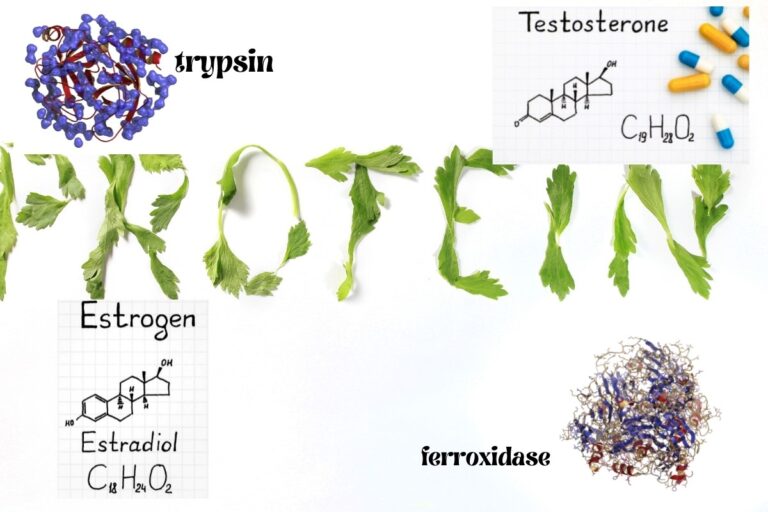Anabolism Definition, Pathways, and Examples
Introduction
Anabolism is the metabolic process of synthesizing larger molecules from simpler ones. It involves a sequence of reactions that produce an energy-rich molecule, such as ATP, from simple sugars like glucose. There are four main steps in this process: glycolysis, Krebs cycle, electron transport chain, and oxidative phosphorylation.


What are Anabolic Pathways?
Anabolic pathways are metabolic processes that create molecules used for growth, development, and other purposes. These include anabolism of proteins (synthesis of proteins from amino acids), anabolism of lipids (synthesis of fats, cholesterol, and related compounds) as well as nucleic acids (synthesis of DNA).
Anabolic pathways are the opposite of catabolism, which breaks down complex molecules into simpler ones for energy or other purposes. Some of the main anabolic hormones are testosterone, insulin, and growth hormone.
What are the Main Types of Anabolic Pathways?
The main anabolic pathways are:
Protein Synthesis
Protein synthesis is the process in which cells assemble protein from amino acids. In this anabolic pathway, a gene coding for an enzyme called RNA polymerase is copied and assembled into a ribosome. The RNA polymerase assembles amino acids to form proteins, folded by the cell’s chaperone proteins.
Protein synthesis is essential for cell growth and repair and the production of hormones or enzymes used in cellular processes. The proteins formed during this anabolic process are used for:
- DNA replication
- Production of enzymes
- Maintaining cell shape ad structure through the cytoskeleton.
- Transport of materials inside the cell
- Cell signalling.
Lipid Anabolism
Lipid anabolism is the process by which lipids are synthesized from smaller molecules.
This pathway consists of three major stages:
- Prenylation: This stage is the process by which a prenyl group (-CH=C(CH)COH) is added to the end of a molecule.
- Reduction: The prenylated molecules are then reduced by NADPH to produce an acyl-CoA.
- Methylation: The acyl group is methylated by a molecule of S-adenosylmethionine to produce a fatty acid.
The lipids created in this anabolism process are used for:
- Construction of cellular membranes
- Storage of energy.
- Sending messages on the cell
- Temperature regulation
DNA Synthesis
DNA synthesis is the process by which DNA molecules are replicated. In this anabolic pathway, each strand of a double helix molecule consists of a sugar-phosphate backbone with paired nucleotide bases attached to each side of the backbone.
The enzyme DNA polymerase copies one strand during DNA synthesis, and then the other strand is copied. The two strands are held together by hydrogen bonds between the bases on each strand, with the bases on one strand always paired with those on the other.
The DNA molecules formed during this anabolic process are used for:
- Replication of genetic material
- Storage of biological information.
DNA synthesis occurs in the nucleus and is connected to the anabolic process of protein synthesis. The building blocks of the DNA are nucleotides, which are assembled into a strand in the nucleus.
The two strands of DNA need to be joined together before replication can occur so that the cell can have two identical strands of DNA, which is essential for survival.
The Growth of Muscles and Bones


Another anabolic pathway leads to the growth and development of muscles and bones. This pathway is called bone modelling and remodelling.
Bones in human beings consist of a matrix made up primarily of collagen, which provides a scaffold for tissue cells that produce new bone. The anabolic process of bone modelling and remodelling requires the action of osteoblasts and osteoclasts.
Osteoblasts create bone and lay down a new matrix, while osteoclasts are responsible for removing old bone material and the absorption of old bone. During this process, the two opposite cells work together to balance the process.
The anabolic process of bone modelling and remodelling is essential for maintaining healthy bones, specifically in children. Also, it is important for the expansion of bone mass in response to increased physical activity.
In adults, bone growth often occurs in response to the anabolic hormone testosterone; This is why men often have larger bones than women.
Making Glucose from Carbon dioxide
The process of building glucose from carbon dioxide falls under anabolic pathways. It involves the use of the enzyme called carbonic anhydrase to convert CO and HCO into CO.
Carbon dioxide is a waste product produced by cells for them to function properly, as it helps remove excess hydrogen ions from the cell. It also reacts with water molecules around it to form two compounds- acid with a pH of less than seven and bicarbonate with a pH greater than seven.
CO + HCO => CO + H+
This reaction is similar to how carbon dioxide reacts with oxygen in the air to form CO or carbon monoxide (a waste product), but it does not require input from outside sources such as oxygen.
Water is a necessary component of this process because water molecules are necessary for the reaction to take place and form H+ ions, which are what the cell needs to function properly.
CO + H+ => COH-
The carbonyl group is found in the far right of the equation and causes CO to react with HCO.
H+ + OH- => HO-
This reaction causes H+ ions to be produced and is necessary for the cell to function properly. The hydrogen ions are needed for the cell to create ATP.
CO + H+ => COH-. Glucose molecules are made up of the carbonyl group and OH- groups.
What are Anabolic Steroids?
Anabolic steroids are synthetic versions of the male hormone testosterone. They aid in protein synthesis and growth by increasing muscle mass, bone density, red blood cell production, and hair growth.
In males, these hormones also have the effect of increasing sex drive. Athletes sometimes use them to increase muscle mass and strength. However, they are also illegal if used without a doctor’s prescription.
Anabolic steroids have many side effects that can be dangerous, such as:
- Heart attack
- High blood pressure
- Dementia
- Liver disease or dysfunction.
These androgenic hormones work by increasing the rate of protein synthesis, which is essential for maintaining muscle.
If females use anabolic steroids, they can have several side effects, such as:
- Deep voice
- Male pattern baldness or growth of facial hair.
- Some female athletes use anabolic steroids to increase muscle and strength without the side effects of male pattern baldness or facial hair growth.
The Steps followed in Anabolic Processes
There are four main steps of anabolic pathways: glycolysis, Krebs cycle, electron transport chain, and oxidative phosphorylation.
Glycolysis
Glycolysis is a metabolic pathway that converts glucose to pyruvate and generates ATP, the energy currency of cells.
This process begins with an enzyme called hexokinase for it to be activated. Hexokinase phosphorylates the glucose that activates the first step of glycolysis, known as the glucose-fructose-phosphate cycle.
Glucose, fructose, and phosphates are converted into one another in a sequence of reactions called glycolysis outside the nucleus.
Glycolysis is also known as anaerobic respiration because it does not need oxygen for cellular metabolism to occur.
Krebs’ Cycle


The Krebs cycle or citric acid cycle is another anabolic pathway that takes place in the mitochondria. It produces ATP from carbohydrates, fats, and proteins by oxidizing them to CO and HO on a molecular level.
This process occurs with large molecules called ketones which contain two carbon atoms each instead of four like glucose.
The Krebs cycle is also known as the citric acid cycle because it produces a citric acid molecule for each turn. The Krebs Cycle occurs in two stages: oxidation and reduction.
Electron-Transport Chain
The electron-transport chain( ETC) uses an enzyme called ATP synthase to phosphorylate ADP, converting it into ATP.
The ETC is essential in the Krebs cycle because it accepts electrons from NADH and transfers them to oxygen. These electrons are used as part of oxidative phosphorylation.
Oxidative Phosphorylation
Oxidative phosphorylation occurs when a molecule called phosphate bonds with ADP, also known as adenosine diphosphate. This bonding results in the production of ATP and water, which is used for cellular metabolism to occur.
During this process, NADH and ATP are converted into a molecule called NAD+ and pyruvate.
Oxidative phosphorylation is the process of energy production for cells that requires oxygen. It is close to glycolysis.
You may be interested in Meristematic Tissues
Take Away
Anabolism is the process in which cells produce proteins and other materials from smaller molecules. It can also refer to a state of increased cellular growth and an increase in metabolism. Understanding how your body uses anabolic pathways will help you better understand what it means for your health and fitness goals.
For example, protein synthesis builds muscle mass by breaking complex sugars into simple ones that are then used to make new amino acids (the building blocks of protein).
In addition, our bodies use energy-producing metabolic cycles during periods when we’re not eating or exercising—anabolic processes such as gluconeogenesis rely on these resources to keep going even without food intake.







